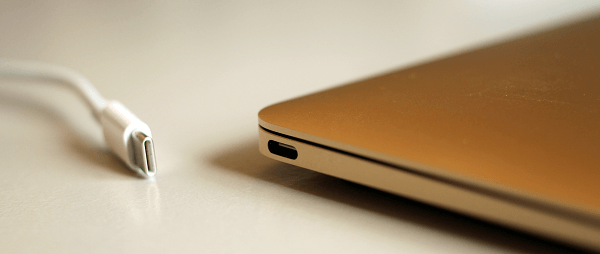By Nirav Gandhi
USB-C Myths: Debunked
USB-C is a new type of USB port that’s appearing on many new high-profile devices, including the MacBook, Dell Latitude and Samsung Galaxy S8. With new technologies come new misconceptions, and StarTech.com is here to clarify some of the confusion.
Myth #1 – USB-C is the new USB-A
Based on its name, it’s easy to assume that USB Type-C functions much the same as USB Type-A. But, aside from its compact, reversible connector and support for faster transfer speeds (10Gbps), USB-C can also support Alternate Modes that deliver different protocols at different speeds. This includes Thunderbolt 3 Alt Mode, DisplayPort Alt Mode, and more. Also, unlike the USB-A connector, USB-C can support system charging up to 100W, meaning that your laptop can be powered through USB-C peripherals such as docking stations and hubs.
Myth #2 – All USB-C ports are the same
Not all USB-C ports are created equal. It may seem logical that because your device has a USB-C port, you can buy any USB-C adapter and expect it to work. Unfortunately, this isn’t the case.
A USB Type-C port may support any combination of data transfer, charging, and video, but it all depends how the device manufacturer implemented the technology. Ideally, all USB-C ports would be clearly marked. If not, it’s important to consult the manual or the manufacturer, to understand what your Type-C port can do — before you purchase your device or buy an adapter.
Myth #3 – USB-C equals a lot of dongles
Currently, there aren’t many USB-C peripherals on the market. So, if you have a compact device with USB-C ports that lacks the connectivity of a larger device, you need adapters to connect to your existing peripherals and displays. While some users may find it inconvenient to use multiple dongles to enable their connections, fortunately, USB-C can support data, video and power over one connector.
A single USB-C docking station or USB-C multiport adapter may (don’t forget about myth #2!) give you all the connections you need, whether you’re setting up your workstation or ad-hoc connections.
Myth #4 – Proprietary docking stations outperform universal docking stations
Some laptops have specific docking connectors that connect the laptop motherboard directly to a proprietary docking station. The direct connection provides native video support and charging capability. Until recently, these advantages made proprietary docking stations the preferred option, compared to third-party USB 2.0 or USB 3.0 universal docking stations which perform USB video conversion.
USB-C is a breakthrough in universal docking technology. One of its key features, DisplayPort Alt Mode (A.K.A DisplayPort over USB-C), enables native graphic support. This means that USB video conversion isn’t required and your USB bandwidth won’t be impacted by your displays. USB-C also features USB Power Delivery, which provides laptop charging support, so it gives you a truly universal single-cable docking solution, with the same capabilities as a proprietary dock.
Universal docking stations are also brand and model agnostic, meaning that you can deploy the same dock throughout an organization, regardless of the specific laptops people are using. And, when the time comes to replace or upgrade the laptops, you won’t have to replace the accompanying docking stations for the sake of compatibility with the new laptop brand or model.
Myth #5 – You need a desktop PC for demanding workflow applications
Thunderbolt 3 technology, which uses the USB-C connector, provides up to 40Gbps of throughput. Simply put, before Thunderbolt 3, there was no way to obtain this performance from a laptop. Thunderbolt 3 does this by providing native connections to PCI Express and DisplayPort. This universal high-speed port enables desktop-level performance from a mobile computer. Now, you can use a laptop for high performance applications such as graphic design and video production. Thanks to Thunderbolt 3, users no longer have to sacrifice portability for performance, and vice versa. Thunderbolt 3 enables:
- Addition of any PCIe card (via Thunderbolt 3 PCIe chassis)
- External graphics (via Thunderbolt eGPU chassis)
- 10 GbE Networking
- One 4K display (4096 x 2160) 30-bit @ 120 Hz
- One 5K display (5120 x 2880) 30-bit @ 60 Hz
- Two 4K displays each (4096 x 2160) 30-bit @ 60 Hz
Nirav Gandhi is the Director of Product Development and is responsible for providing leadership in the strategy and development of all StarTech.com products incorporating various technologies such as Thunderbolt, HDMI, DisplayPort, HDBaseT, USB, 802.11, etc. Such technologies, as these, develop into diverse product portfolios ranging from Display Adapters, A/V converters and extenders, laptop docking stations, wired and wireless networking, HDD enclosures, server-room solutions, and an extensive range of cables.
Photo courtesy: USB-C. (2017, July 19). In Wikipedia, The Free Encyclopedia. Retrieved







